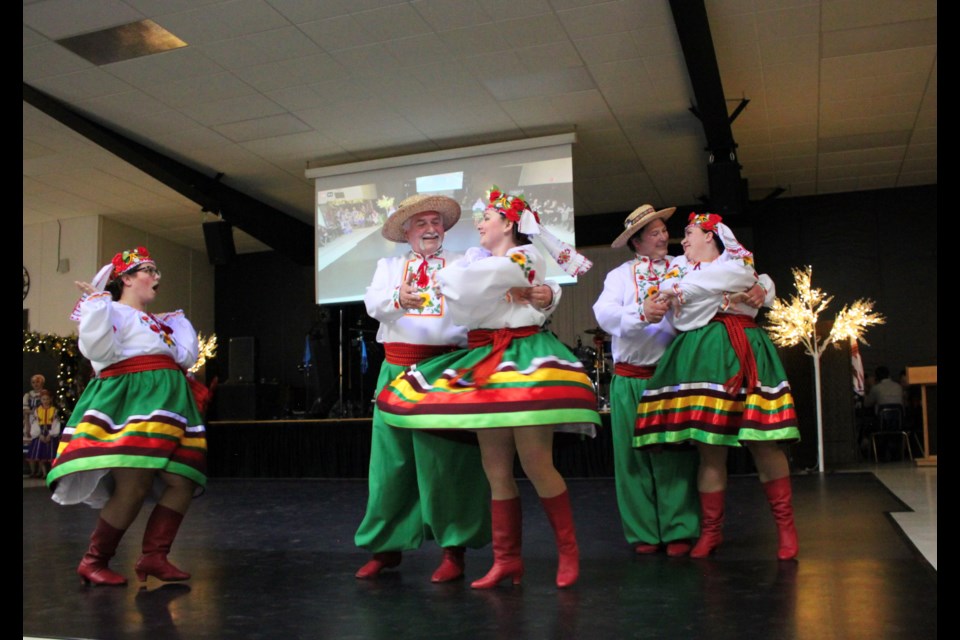GLENDON – The Glendon Shevchenko Ukranian Dance Club hosted its 51st annual Zabava, including a dinner, performance, and dance featuring the live Ukrainian folk band Millennia.
The event was held at the RCMP hall on March 22, and the emceed by Janice Voltner and Ken Pshyk.
Pshyk thanked the community for its unwavering support, and its commitment to keeping Ukrainian culture alive in the small community.
“As times move forward, one thing that is guaranteed is change, but one thing that has remained unchanged is the commitment of our community to our club,” said Pshyk.
Voltner spoke about the 51 years the club has been running and hosting the Zabava event, and how it is a testament to the commitment of the dancers, parents, instructor, and supporters who have kept the club alive and thriving.
Voltner said the community support means the club can share the pride they feel in maintaining their Ukrainian culture and can pass it down from generation to generation.
“Our dancers have worked so hard, and they have shown us all tonight their love for Ukrainian dance,” said Voltner.
She also introduced the club’s instructor, Jessie Balan.
“Jessie has been our instructor for six years now. He started dancing at the age of eight and danced his way to the top. He currently dances with the Volya Ukrainian Dance Ensemble based out of Edmonton,” said Voltner.
Balan has been teaching for 11 years and spoke about how much he has enjoyed teaching in Glendon and attending the Zabava, which he explained simply means ‘party’ and is not associated with a specific holiday.
“The club has done fantastic. They have weekly rehearsals, and then extra workshops every once in a while, and they just attended two competitions earlier this month . . . They are lovely. Rural folk in general are always friendly. I’m a smalltown person myself and it’s nice to be in the area,” said Balan.
Upon welcoming the dancers to the stage, Voltner explained the significance of ‘Pryvit,’ the welcoming dance, which featured a traditional Ukrainian bread called Kulach that the dancers presented on stage.
“This is a ring-shaped bread that symbolizes eternity and the circle of family and life. The Kulach has been braided, and each strand represents the Holy Trinity. It is said that where there is bread and water there is no hunger. As a humble greeting, the bread is torn apart, dipped in salt, and eaten by guests upon arrival.”
Voltner gave descriptions of the dances before the dancers whirled and leapt across the stage in a flurry of colour.
“Ukrainian dances convey themes of joy and community, reflecting the resilience and pride of the people. They tell stories of everyday life and nature,” said Voltner.




